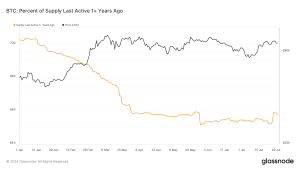The Chainalysis Crypto Crime Report 2022 has observed that DeFi protocols contributed to a significant 37% of all crypto scam revenue in 2021, becoming the preferred tool for money laundering by cybercriminals.
Rise In Crypto Transactions – Legal And Illegal
According to the report, a total of $8.6 billion worth of cryptocurrencies was laundered in 2021. Compared to the amount laundered in 2020, there has been a 30% increase. The firm also commented on the rise of money laundering in the last year, saying that it was inevitable since all crypto activities (both legitimate and illegal) have had a substantial increase in 2021. The report also highlighted the fact that the total amount represents funds extracted from crypto-native crimes like darknet market sales or ransomware attacks, where trades are conducted via cryptocurrencies instead of fiat currencies.
DeFi Apps Draws Laundered Funds
However, the role of DeFi (decentralized finance) applications in money laundering has been the real revelation of this report. The DeFi sector represents all crypto-denominated financial transactions existing outside the jurisdiction of a centralized entity. With 17% of the laundered amount going into DeFi apps, it is a significant increase from the 2% in 2020. Furthermore, almost half the amount from wallet addresses associated with theft was sent to DeFi platforms.
Other Channels Of Money Laundering
DeFi applications were not the only channel of money laundering adopted by cybercriminals. Mining pools, high-risk exchanges, and mixers have also been involved in questionable money transfers. Since mixers combine potentially compromised or recognizable crypto funds with others, it is more successful in hiding a trail of funds. However, the report suggests that a majority of crypto criminals still prefer to launder their money the old-fashioned way, i.e., through centralized exchanges.
Kim Grauer, Chainalysis’ director of research, commented on the dichotomy of cybercrimes,
“People tend to think of cryptocurrency crime as being one thing, but it couldn’t be more varied. It couldn’t be more different in the way that criminals use [crypto] and have a digital footprint over how they manage money.”
North Korea Sidesteps Sanctions With Stolen Funds
Around $400 million was stolen by North Korean hackers, all masterminded by the infamous Lazarus Group. The country has also made it a point to carefully launder all the stolen crypto, which led to Chainalysis’s observation that there seems to be a well-thought-out plan and intention for all the stolen funds. The firm also noticed a significant rise in the number of software tools that can pool and scramble cryptocurrencies, thus essentially contributing to money laundering. The United Nations believes that the country is using the stolen funds to support its nuclear and ballistic missile programs in an attempt to circumvent sanctions.
Disclaimer: This article is provided for informational purposes only. It is not offered or intended to be used as legal, tax, investment, financial, or other advice.






















